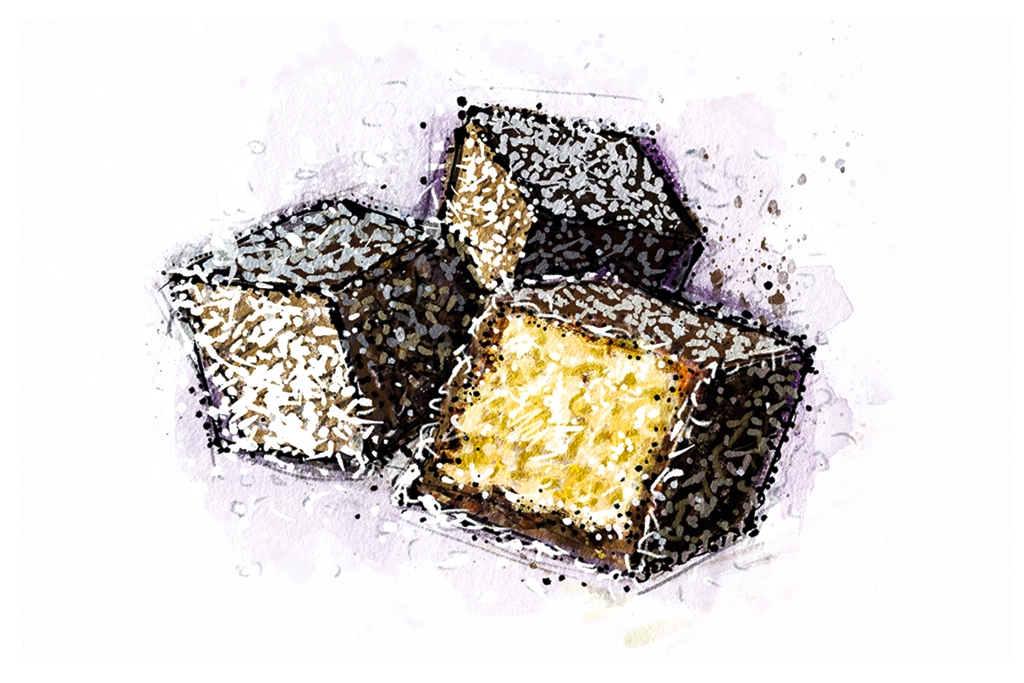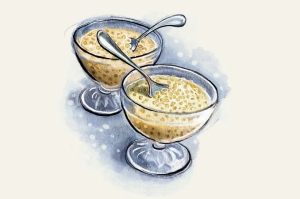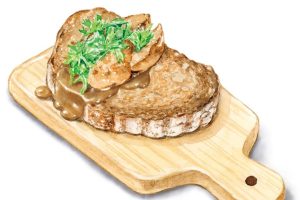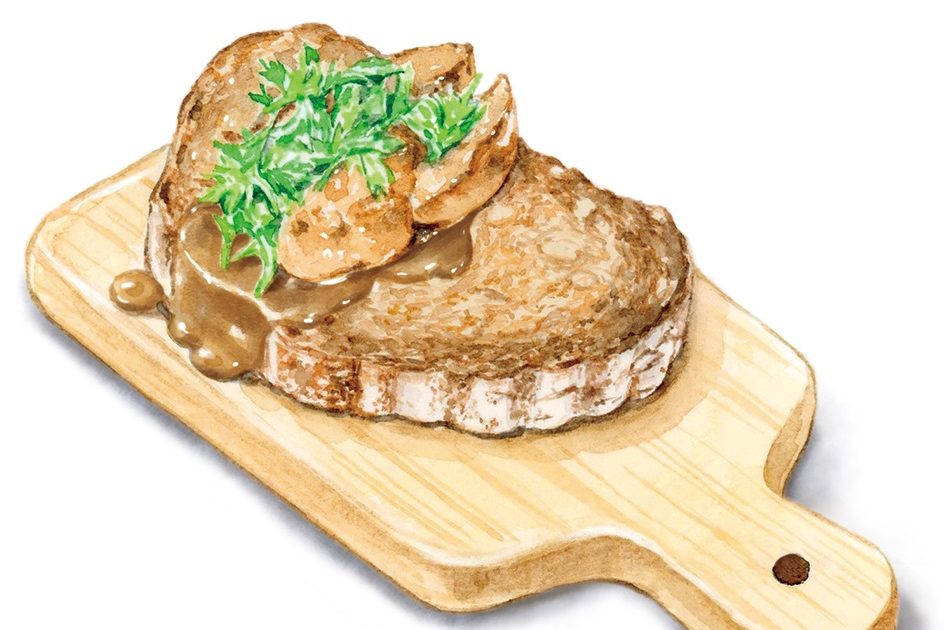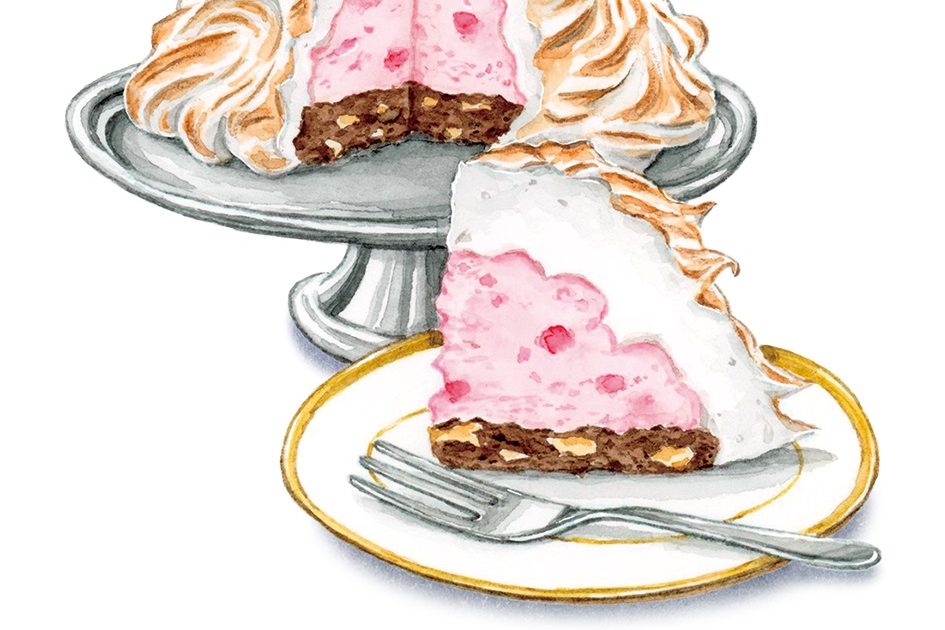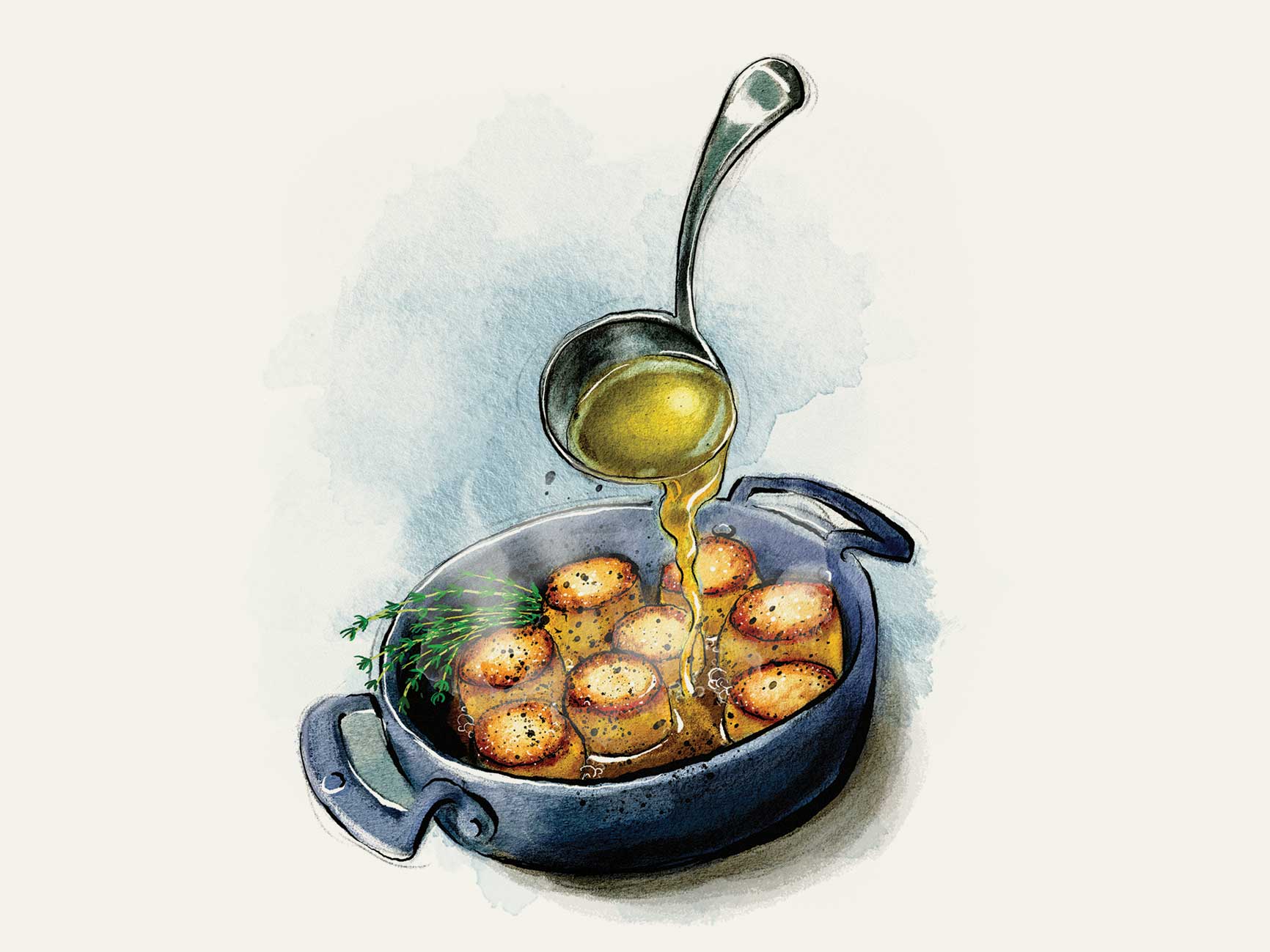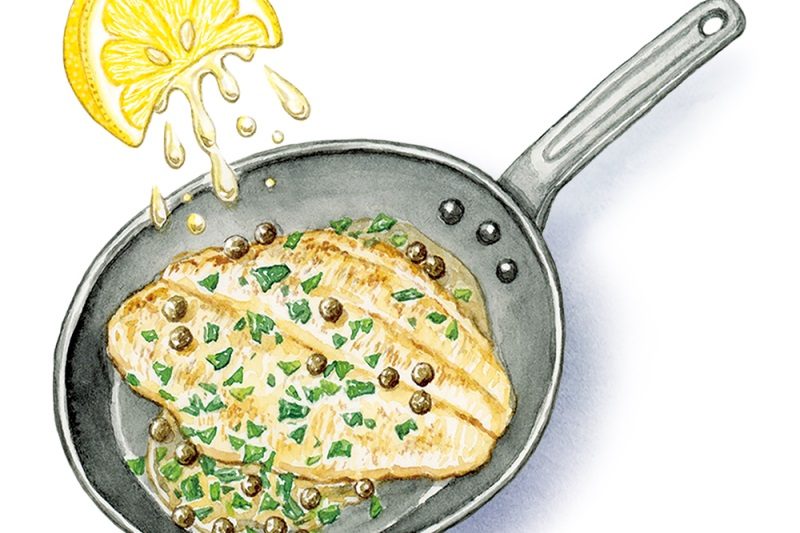A confession: I don’t like being messy. I think this is something of a failing in a home baker, but I can’t deny it. I can’t stand dough on my hands. I don’t like getting buttercream on myself when I ice a cake. I love arancini, but my God, the mess! I might as well breadcrumb my own hands. It’s not that I’m a neat freak (I wish), I just don’t like being sticky. So in some ways, lamingtons are my worst nightmare. Because, as I have learned, there is no way of making these cakes without getting a bit messy.
Lamingtons, the (unofficial) national cake of Australia, are little cubes of sponge cake coated in a thin chocolate sauce and tossed in desiccated coconut until they look like shag cushions. The individual elements are unexceptional, but bringing them together makes something distinctive and special.
They were invented at the beginning of the twentieth century, and named after Lord Lamington, the governor of Queensland at the time, or possibly his wife, Lady Lamington. Legend has it that their chef, Armand Galland, was called upon to produce a pudding for guests at short notice, so he chopped up a cake, slung the pieces in a chocolate mixture and dusted them with coconut. It was a hit. So beloved is it that a few years ago, it was the subject of a terribly droll April Fool’s joke, where it was claimed that the lamington was in fact invented in New Zealand and should properly be called a “Wellington.”
Today, you’ll often find them filled with jam or sandwiched with cream. Ottolenghi chef Helen Goh fills her giant lamington cake with marmalade, which I love the sound of, but I’m a sucker for anything with marmalade, while Natalie Paull of the erstwhile Beatrix bakery in Melbourne ingeniously sandwiched hers with “banana schmutz” (she called them “bananingtons”). But traditionally they would be plain, so if we’re going classic, we need them unsandwiched.
A perfect lamington relies on a few things: first of all, proportions. You need an evenly risen, level sponge to create a cake cube. This is helped along by a little cornflour in the mixture, a cooler, longer bake than normal, and the covering of the cake for most of its time in the oven.
Second, the sponge itself needs to be robust enough to withstand being dunked in the chocolate glaze. The cake is usually either a whipped sponge or a “butter cake.” The key, I find, after a couple of crumbly, messy attempts, to a good lamington is a sponge that holds its own when being swooped through chocolate. The Australian food writers I love most — Dan Lepard, Kate Young, Helen Goh again — use yogurt or sour cream in their sponge to help with the structure. Happily, the yogurt sponge is gorgeous, heavy with vanilla, soft and tender, while being sufficiently robust for dunking.
Finally, the chocolate glaze itself needs to be the right consistency: not so thin that it runs off the cake, but not so thick that it tears the sponge as you submerge it. The chocolate coating is integral to the experience: baking writer Dorie Greenspan describes it as “neither a frosting nor an icing; it’s a hot cocoa sauce that seeps into the cake just enough to create a soft, sweet outer layer,” which is pretty perfect, actually.
This brings us to the mess. There are ways to mitigate it: chilling the cake before dunking can reduce the crumbs in your chocolate (and give you cleaner lines on the finished cake); setting up a work station with separate quarantined chocolate, coconut and end product areas will help, as will keeping one hand for “wet” (chocolate) and one hand for “dry” (virgin cake and finished cake). But, sooner or later, you’re going to be as covered in chocolate and coconut as your lamingtons. And perhaps the answer is to embrace it. Loosen up. Enjoy the process. There’s definitely a life lesson somewhere in there; I’m not sure I’m there yet but maybe if I make enough lamingtons, I’ll get a little bit closer — which doesn’t seem like such a hardship.
Makes 25
Takes 40 minutes
Bakes 1 hour
For the sponge
- 3½ oz unsalted butter, melted
- 1 tsp vanilla paste
- 8½ oz caster sugar
- 5⅔ full-fat yoghurt
- 4 medium eggs
- 7½ oz self-raising flour
- 1 oz cornflour
- ½ tsp fine salt
For the coating
- 5 fl oz whole milk
- 7 oz granulated sugar
- 1 oz cocoa powder
- 1 tbsp golden syrup
- ½ tsp fine salt
- 5⅓ dark chocolate, chopped small
- 8¾ oz desiccated coconut
- Line a 20cm square tin with greaseproof paper and preheat the oven to 300°F
- Beat together the butter, vanilla, sugar, yoghurt and eggs until combined, then fold through the flour, cornflour and salt. Pour the batter into the prepared tin, and cover with a tented piece of tin foil. Bake for 45 minutes, remove the foil and bake for another 15 minutes until the sponge is golden, risen and, when pressed gently with a finger, springs back. Leave to cool
- Trim the edges, cut the sponge into twenty-five cubes and freeze for two hours
- Heat the milk, sugar, cocoa powder, golden syrup and salt together until the sugar dissolves and it’s just starting to simmer. Pour this mixture over the dark chocolate and stir until the chocolate has melted and the mixture is combined. Place the desiccated coconut in a small tray
- Spear a cube of sponge on the end of a fork, dunk it in the chocolate mixture and move it around until covered. Drop it off the fork into the coconut and roll it around to coat it. Continue with the other cubes, leaving them to one side on greaseproof paper until the chocolate has set
This article was originally published in The Spectator’s UK magazine. Subscribe to the World edition here.



